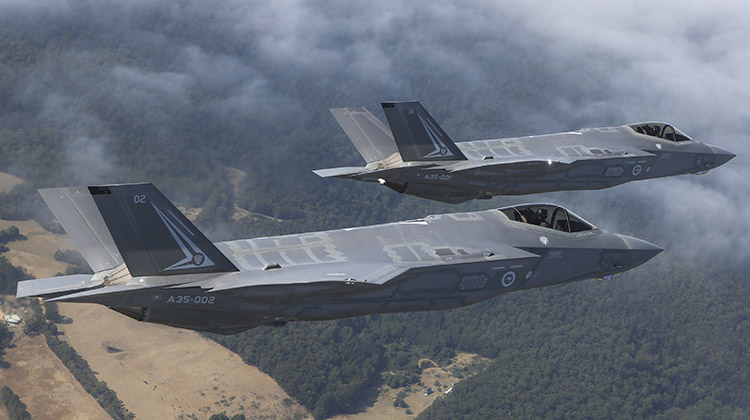Lockheed Martin soothes customer concerns over recent corrosion and depressurisation issues.
To continue reading the rest of this article, please log in.
Create free account to get unlimited news articles and more!
As a fifth generation aircraft, the F-35 is the perfect blend of all-aspect stealth even when armed, low-probability-of-intercept radar, high-performance air frames, advanced avionics and highly integrated computer systems bringing an unrivalled, gods-eye view of the battlespace.
However, as with any new and highly complex technology, the aircraft have suffered some delays and experienced lessons learned with some of the technological innovations that will make the aircraft the dominant fighter aircraft of the 21st century.
As identified recently, a small number of earlier batch aircraft were discovered to have a small amount of corrosion when cycling through a maintenance and sustainment depot in the US. A lengthy investigation and root cause analysis determined that the surprising defect was the result of primer not being applied to the fastner holes in the aircraft's fuselage.
When speaking with Defence Connect, director of F-35 international business development Steve Over was quick to highlight Lockheed's rapid response to the issues identified in late 2017.
"We have developed a remediation plan in close collaboration with our customers. It was decided that the issues presented weren't urgent, so they would be rectified as the aircraft cycled back through maintenance depots," he said.
Over went further, saying, "Occasionally things like this happen and we have worked closely with our customers to design and enact a resolution action plan."
In response to the recently identified issues, Over said, "We would like to do better, our customers deserve it and we will deliver it."
Meanwhile, recent publicity surrounding apparent depressurisation and oxygen supply issues, allegedly similar to those experienced in the Lockheed Martin F-22 Raptor, were also identified when a number of pilots stationed at Luke Air Force Base presented with physiological symptoms similar to hypoxia, including oxygen deprivation, ear pain and sinus issues.
In response to the claims of depressurisation concerns around the F-35 cockpit, Over was clear when he said that it was not a depressurisation issue and that slow progress had been made regarding the root cause analysis, with a number opportunities to improve the robustness of the design identified.
Meanwhile, the complex physiological issues experienced by the small number of pilots could not be directly attributed to hypoxia (oxygen deprivation) and it would be prudent to await the final findings of the thorough investigation for a likely cause.
Australia will officially take delivery of two F-35As which will arrive at RAAF Williamtown in December of this year, which will serve as the regional maintenance and modification facility for the Asia-Pacific region, highlighting the truly global and integrated nature of the immense F-35 project, while RAAF Amberley will eventually serve as the Asia-Pacific engine maintenance and repair facility with secondary facilities located in Japan.
The RAAF has been putting it's pilots through their paces with their American and wider global counterparts, with six instructor pilots currently based at Luke AFB and a new cadre of four beginning their training last week. Over was, as with Lockheed Martin general manager for training and logistics systems Amy Gowder, quick to highlight that 2018 would be a landmark year for Australia's transition to the F-35, as an additional four Australian F-35s will be based at Luke AFB by the end of the calendar year for training and development.
Australian pilots have gone on to complete 1,500 flight hours in the F-35A and lay the groundwork for what will become Australia's contribution to the broader program's Continuous Capability Development Delivery scheme, which will see the aircraft evolve throughout the operational life of the weapons system.
Over was pleased to highlight that following a long, sometimes tumultuous program Lockheed was delivering the F-35, which Chief of Air Force, Air Marshal Leo Davies is quoted as saying will "replace nothing, because they change everything".
"After almost a 17-year journey together to deliver this transformational capability to Australia, [Lockheed Martin] are in line to meet the obligations of the original contract we signed in 2001," said Over.
Australia is spending about $17 billion to buy 72 fighters of the F-35A variant, with the aircraft due to reach initial operating capability by December 2020. Four aircraft have been delivered to Australian pilots training in the US, according to the Defence Department’s official website.
The latest Defence Connect Podcast with Lockheed Martin local industry partner Milskil's CEO and managing director, John Lonergan, is available here.
Stephen Kuper
Steve has an extensive career across government, defence industry and advocacy, having previously worked for cabinet ministers at both Federal and State levels.

 Login
Login








